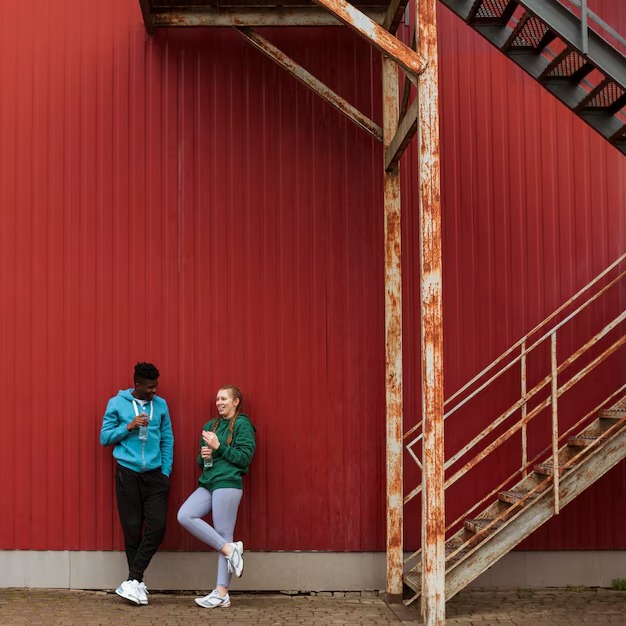Transforming Shipping Containers Shop Pop-Up into Unique Retail Spaces

Transforming Shipping Containers Shop Pop-Up into Unique Retail Spaces
In recent years, there has been a remarkable shift in the way retail environments are conceived and constructed. This innovative approach involves utilizing robust transport units, typically designed for cargo movement, as a foundation for imaginative consumer outlets. By reimagining the conventional retail structure, entrepreneurs can create distinctive venues that captivate customers and enhance their shopping experience.
These adaptable units present an array of possibilities, allowing for the seamless fusion of functionality and artistic flair. With their modular design, they can be modified and reconfigured to suit diverse needs and preferences. This not only contributes to sustainability efforts but also offers an engaging atmosphere for patrons who seek something beyond standard shopping experiences.
As creators embrace this trend, a wave of vibrant, eye-catching spaces emerges in urban landscapes. Each installation becomes a testament to creativity, balancing aesthetics with practicality. By exploring this novel method of retail space design, businesses can carve out a distinctive identity while inviting a fresh wave of consumers eager to explore.
Creative Uses of Shipping Containers
The innovative repurposing of robust metal boxes has led to a remarkable trend in various industries. These versatile structures have found new life in unexpected domains, showcasing their adaptability and potential to fulfill diverse functions. From artistic endeavors to functional spaces, there is a growing recognition of how these previously utilitarian objects can be crafted into captivating environments.
Cafés and Eateries
One of the most popular applications is transforming these strong frameworks into cozy cafés or vibrant eateries. The inviting ambiance created by incorporating large windows and creative designs attracts customers looking for unique experiences. Many establishments enhance their aesthetic appeal by incorporating greenery and artistic elements, making them perfect spots for relaxation and social interactions.
Art Galleries and Studios
These robust structures are also making waves in the artistic community. Artists are turning them into galleries or studios that promote their work in an unconventional setting. This creative approach not only serves a functional purpose but also draws attention to the artistry involved in both the creations displayed and the unconventional architecture itself. Collaborations between artists and architects further push the boundaries of design, fostering a vibrant cultural scene.
Benefits of Container Conversion
Repurposing used structures into retail spaces offers numerous advantages. This innovative approach not only enhances the aesthetic appeal but also provides practical solutions to modern business needs. Companies can enjoy enhanced visibility while addressing sustainability concerns through recycling and upcycling materials.
Cost Efficiency
One of the primary benefits is the financial aspect. Utilizing pre-owned structures can significantly reduce expenses compared to traditional construction methods. Key factors include:
- Lower initial investment due to reduced material costs.
- Faster setup time leading to quicker return on investment.
- Minimized labor expenses as less complex construction is required.
Flexibility and Mobility
Another compelling advantage is the adaptability of these units. This flexibility allows businesses to respond to changing market conditions effectively. Key points include:
- Easy relocation to different sites based on demand.
- Ability to modify layouts and designs as needed.
- Seamless integration into various environments, from urban settings to remote locations.
Ultimately, converting these structures into commercial venues fosters an innovative atmosphere, encouraging new business models while contributing positively to the environment.
Designing an Appealing Shop Layout
A well-thought-out arrangement can greatly enhance the customer experience and promote desirable purchases. Creating a striking atmosphere that reflects the brand’s identity while maintaining functionality is essential. The layout serves as the foundation upon which visual merchandising and customer interactions are built.
Utilizing Space Wisely
Effective use of available space allows for easy navigation and showcases products in an engaging manner. Consider incorporating zones for different product categories, ensuring that pathways are clear and inviting. Placing popular items at eye level and near the entrance can capture attention immediately, enticing customers to explore further.
Incorporating Interactive Elements
Engagement can significantly boost the overall appeal of the environment. Adding interactive features, such as product demonstration areas or immersive displays, invites visitors to participate actively. Thoughtful placement of seating areas promotes relaxation, encouraging longer stays and more extensive exploration of offerings.
Successful Case Studies Around the World
Across the globe, innovative entrepreneurs have embraced the concept of repurposing industrial structures to create dynamic retail experiences. These ventures not only provide a distinctive atmosphere but also enhance sustainability by giving new life to materials that might otherwise be discarded. Through various creative implementations, these projects have captured the attention of the public and have become integral parts of their communities.
In Melbourne, Australia, a collective of vendors operates from a series of refurbished metal shells that form a vibrant market space. This bustling hub of activity features local artisanal food, handmade crafts, and pop-up shops, attracting both residents and tourists alike. The initiative has sparked community engagement and offers a platform for small businesses to thrive, while also serving as an iconic local landmark.
South Africa’s Cape Town has seen a similar initiative, where a group of converted steel structures houses a diverse range of retailers, from cafes to boutiques. This project focuses on promoting local artists and entrepreneurs, fostering a sense of community empowerment. It has quickly become a cultural hotspot, with frequent events and markets that highlight the city’s rich heritage and creativity.
In the heart of Amsterdam, the innovative use of this form of architecture has led to a mixed-use space that combines leisure, shopping, and co-working areas. The design encourages collaboration among different businesses, allowing them to share resources and ideas. This synergy has transformed the area into a lively social venue, attracting visitors for its unique offerings and atmosphere.
The global trend demonstrates not only the versatility of this approach but also the potential for creating engaging spaces that resonate with the public. As communities continue to explore these creative avenues, the successful examples showcased serve as inspiration for future endeavors worldwide.
Challenges in Container Retail Development
The evolution of unconventional retail spaces presents various obstacles that stakeholders must navigate. These hurdles can range from structural integrity to zoning regulations, impacting the overall feasibility of creating novel business platforms. Entrepreneurs venturing into this arena must be equipped to address these nuances effectively to ensure sustainability and success.
Regulatory Hurdles
One of the most significant challenges arises from governmental regulations and zoning restrictions. Different jurisdictions have specific codes governing commercial establishments, which can complicate the realization of a creative retail vision. Compliance with safety standards, building codes, and local ordinances is essential yet can be a cumbersome process.
Logistical Considerations
Another key aspect involves logistical issues related to delivery, installation, and maintenance. The mobile nature of these retail environments might lead to complications in transportation and setup. Additionally, accessibility and utility connections are critical for operations but may not always be readily available.
| Challenge | Description |
|---|---|
| Regulatory Compliance | Meeting local building codes and zoning laws can be a significant barrier. |
| Logistics | Transportation and installation can pose logistical difficulties. |
| Utility Access | Ensuring proper utility connections may require additional planning. |
| Structural Integrity | Designing for durability and stability is crucial for safety. |
Future Trends in Container Commerce
The landscape of retail is evolving with innovative approaches to utilizing unconventional structures for business purposes. As the demand for unique shopping experiences grows, creative environments are becoming increasingly popular, reshaping how consumers engage with brands. This shift signals a departure from traditional retail settings, inviting entrepreneurs to explore alternative formats that promote sustainability and customization.
One significant trend is the integration of technology within these innovative setups. Smart systems will enable seamless interactions between customers and brands, enhancing the overall shopping journey. From augmented reality displays to interactive kiosks, technology will play a pivotal role in enriching the consumer experience, making it more engaging and personalized.
Moreover, the emphasis on sustainability will continue to rise, with many businesses opting for eco-friendly practices. By prioritizing the use of recyclable materials and energy-efficient solutions, retailers can appeal to environmentally conscious shoppers. This focus on green initiatives not only attracts a wider audience but also contributes positively to the overall ecosystem.
Another noteworthy development is the rise of mobile commerce. The versatility of portable retail formats allows businesses to reach diverse locations and demographics, creating pop-up experiences that generate excitement. This adaptability not only minimizes overhead costs but also fosters a sense of community by bringing unique offerings to different neighborhoods.
Lastly, collaborations between brands and local artisans will likely gain traction. By curating a selection of locally sourced products, retailers can enhance their offerings while supporting regional craftsmanship. This partnership not only enriches the shopping experience but also strengthens community ties, allowing customers to connect with the stories behind the products they purchase.
Q&A: Creating shops from shipping containers
What are the advantages of using shipping containers for a retail store?
Using shipping containers for a retail store provides a cost-effective solution that can be modified to fit various design needs. Their durability allows them to withstand harsh weather conditions, making them suitable for both interior and exterior use.
How can modification enhance the functionality of a retail store made from shipping containers?
Modification of shipping containers can enhance the functionality of a retail store by adding features like windows, doors, and ventilation systems. This allows for better customer experience and efficient use of space, transforming a simple container into an attractive retail environment.
What are some popular interior and exterior features like those found in traditional retail stores that can be added to shipping containers?
Popular interior and exterior features like those found in traditional retail stores include shelving units, display windows, lighting fixtures, and signage. These modifications help create an inviting atmosphere while maintaining the unique aesthetic of using shipping containers.
How do shipping containers provide a cost-effective option for starting a retail store?
Shipping containers offer a cost-effective option for starting a retail store because they are often less expensive than traditional construction materials. Additionally, the ability to modify them quickly reduces labor costs and time, allowing entrepreneurs to launch their businesses faster.
Can shipping containers withstand extreme weather conditions for retail store applications?
Yes, shipping containers are designed to withstand extreme weather conditions, making them suitable for retail store applications in various climates. Their robust structure protects the interior and exterior from elements like rain, snow, and high winds.
What are some innovative ways to use shipping containers in retail store design?
Innovative ways to use shipping containers in retail store design include stacking multiple containers to create multi-level spaces, incorporating green roofs, and utilizing outdoor areas for pop-up shops. These modifications maximize space and enhance the shopping experience.
How do interior and exterior modifications impact the overall appeal of a retail store made from shipping containers?
Interior and exterior modifications significantly impact the overall appeal of a retail store made from shipping containers by allowing for customization that reflects the brand’s identity. Features like vibrant colors, artistic designs, and functional layouts attract customers and create a unique shopping environment.
What are the environmental benefits of using shipping containers for a retail store?
Using shipping containers for a retail store offers environmental benefits such as reducing waste by repurposing existing materials. Additionally, modifications can include energy-efficient features like solar panels and insulation, contributing to sustainability efforts in retail.
How can businesses ensure their shipping container retail store meets local building codes and regulations?
Businesses can ensure their shipping container retail store meets local building codes and regulations by consulting with architects or contractors experienced in container modifications. They should also research zoning laws and obtain necessary permits before construction begins.
What role do features like security systems play in the success of a retail store using shipping containers?
Features like security systems play a crucial role in the success of a retail store using shipping containers by protecting inventory and ensuring customer safety. Installing alarms, surveillance cameras, and secure locking mechanisms enhances the overall security of the retail environment.
How can a coffee shop benefit from using a shipping container store?
A coffee shop can benefit from using a shipping container store by creating a unique and inviting atmosphere while minimizing construction costs. The shipping container offers a durable structure that can be easily customized to fit the coffee shop’s aesthetic and functional needs.
What are the key advantages of a shipping container for mobile retail?
The key advantages of a shipping container for mobile retail include portability, cost-effectiveness, and the ability to modify your container to suit various business ideas. This flexibility allows you to relocate your shop as needed and adapt to different markets or events.
Can you explain how to design and build a shipping container coffee shop?
To design and build a shipping container coffee shop, start by selecting the perfect shipping container, such as a 20 ft container or 40 ft shipping containers. Plan the layout, including seating and service areas, and ensure your shipping container meets building codes and zoning regulations.
What features should you consider when creating a unique shipping container retail space?
When creating a unique shipping container retail space, consider features like large windows for natural light, efficient storage solutions, and aesthetic elements that reflect your brand. Additionally, think about how to combine several containers to maximize space and functionality.
How do shipping containers provide an alternative to traditional brick-and-mortar stores?
Shipping containers provide an alternative to traditional brick-and-mortar stores by offering a lower-cost option that can be set up quickly and relocated easily. This flexibility allows businesses to test new markets without the long-term commitment of a permanent location.
What are some benefits of using repurposed shipping containers for pop-up events?
The benefits of using repurposed shipping containers for pop-up events include their mobility, unique visual appeal, and cost-effectiveness. Shipping container pop-up shops can attract attention and create memorable experiences for customers, enhancing brand visibility.
How can you ensure your shipping container coffee shop is built to withstand various weather conditions?
To ensure your shipping container coffee shop is built to withstand various weather conditions, select high-quality materials for insulation and roofing. Additionally, make sure the design includes proper drainage systems and ventilation to maintain comfort for customers.
What should you need to consider when planning a shipping container transformed into a retail space?
When planning a shipping container transformed into a retail space, consider factors such as local building codes, zoning regulations, and the overall design of your shipping container. Think about how you will modify your container to accommodate customer flow and product display.
Can you explain how to set up a shipping container pop-up shop effectively?
To set up a shipping container pop-up shop effectively, choose a strategic location with high foot traffic, design an inviting exterior with signage, and ensure the interior is well-organized. Additionally, promote your pop-up store through social media and local advertising to attract customers.
What innovative business ideas can be implemented using small shipping containers?
Innovative business ideas that can be implemented using small shipping containers include coffee shops, food stalls, retail boutiques, and art galleries. These versatile spaces allow entrepreneurs to create unique shopping experiences while benefiting from the affordability and mobility of shipping containers.

